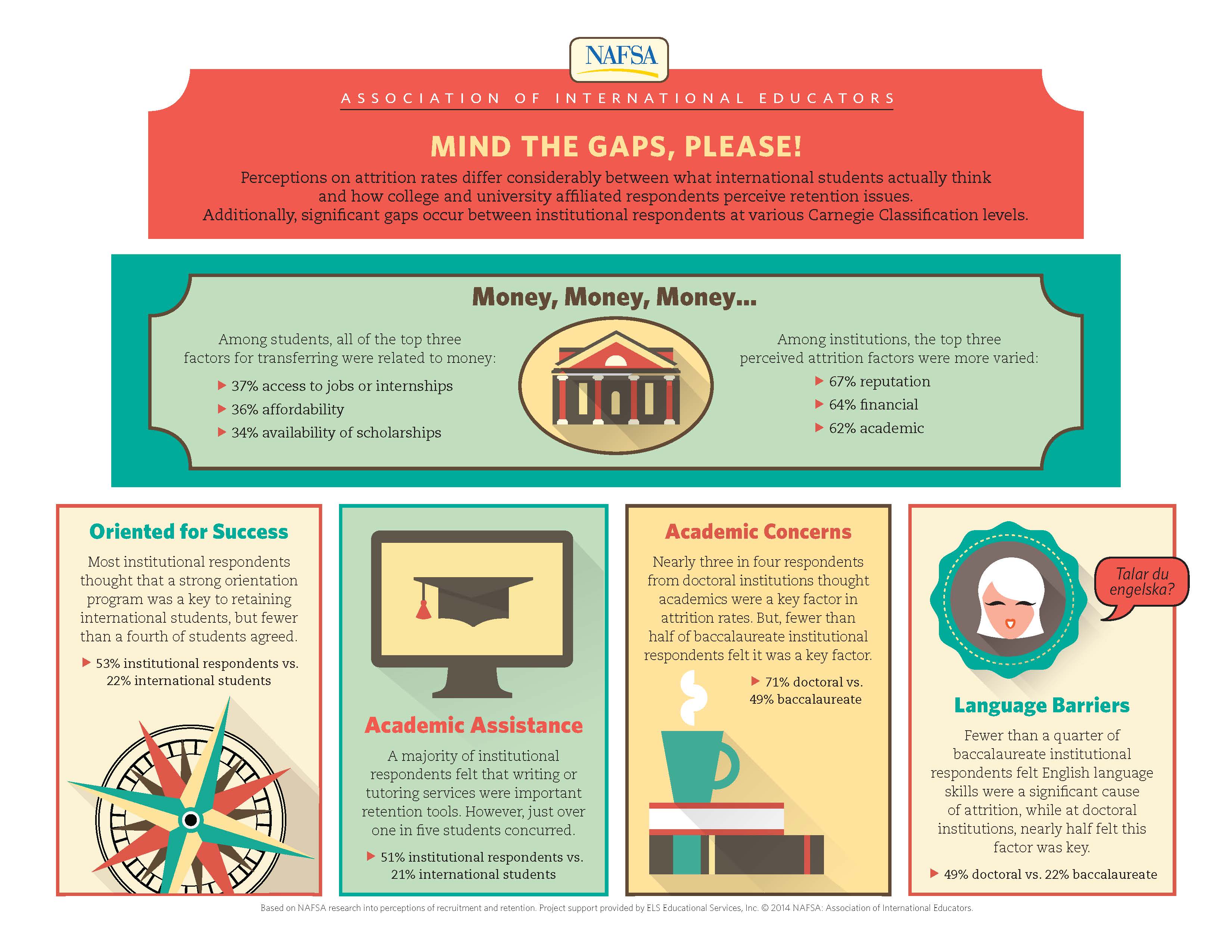You have /5 articles left.
Sign up for a free account or log in.
SAN DIEGO – The main sources of dissatisfaction for international undergraduate students at U.S. institutions relate to finances, according to new research on retention released today at the annual NAFSA: Association of International Educators conference.
International students who responded to a national survey cite access to jobs or internships (37 percent), affordability (36 percent) and availability of scholarships (34 percent) as their main reasons for dissatisfaction, followed distantly by meal plans (26 percent) and quality of housing (17 percent).
Students who do not plan to transfer from their college of first enrollment are more than twice as likely to say that institutional aid or scholarships are among their top two sources of funding than are students who intend to transfer. Students who do not plan to transfer also have higher grades: although the majority of students in the sample reported relatively high grade point averages of 2.9 or above, those who intend to transfer are more likely to report GPAs on the lower end of that scale -- 2.9 to 3.4 -- than are their peers who don't plan to transfer (42 versus 30 percent). This suggests, not surprisingly, that academic preparedness issues play a role in driving attrition even if students don’t explicitly cite academic difficulties as a reason for dissatisfaction.
Top Two Sources of Funding Cited by International Students (n.=517)
| Among Top Two Sources of Funding | Transferred (n= 51) | Plan to Transfer (n=59) | Will Not Transfer (n=407) |
| Personal Savings | 18% | 12% | 14% |
| Bank Loan(s) | 0% | 2% | 5% |
| Family or Friends | 84% | 86% | 72% |
| Financial Aid or Scholarship from U.S. Institution | 20% | 22% | 45% |
| Grants or Scholarships from Home Country | 22% | 17% | 16% |
| Other | 8% | 2% | 1% |
In a parallel survey of international education professionals, respondents identified top reasons for student attrition as being transfer to a “better fit” institution (67 percent chose this option), followed by financial difficulties (64 percent), academic difficulties (62 percent), inadequate English language skills (40 percent) and dissatisfaction with location (34 percent). Overall university officials reported higher retention rates for their undergraduate international students than for domestic students, which makes sense given that international students' visas are tied to the institutions they attend and, unlike domestic students, they don't have the option to drop out and get a job (unless they wish to return to their home country, of course).
The research, commissioned by NAFSA and conducted by the credential evaluation company, World Education Services, attempts to identify areas of mismatch between student and administrator perspectives on attrition and makes recommendations for practices to improve student retention.
Asked about good practices, students identified financial assistance or scholarships, on-campus jobs for international students, and career services tailored for international students, along with academic advising and student life activities for international students, as examples of good practices, whereas international education administrators put comparatively less emphasis on issues related to jobs and finances and more on academic support services and programs designed to help students acculturate to campus. International education administrators rated student life activities for international students, international student orientations, tracking or early warning systems to identify students facing visa problems or academic difficulties, writing and tutoring programs, and financial assistance – which would include emergency funds for students and on-campus employment – as top examples of good practices for retaining international students.
“The three most important areas of divergence are students’ views on access to jobs or internships, the institutional view on the importance of language difficulties, and the desire to transfer to a 'better fit' institution,” the research report says. “Institutions attribute attrition to reasons that relate to academic preparedness and a desire to transfer into a ‘better fit’ institution, while students typically view these in terms of tangible and intangible returns from of their investments in education. This gap results in unmet expectations and subsequent attrition. Although the consensus among undergraduate international students pointed to a lack of work opportunities and issues of affordability as being the largest barriers to satisfaction, there were indications that academic challenges are catalysts for attrition as well. This also suggests that some international students are less willing to recognize their lack of academic preparedness and may be facing more financial pressures.”
“Students may be underestimating the academic preparation expected to be on a campus and they are overestimating the availability of jobs, availability of scholarships, availability of financial aid and so on,” said Rahul Choudaha, the principal investigator of the report and chief knowledge officer and senior director of strategic development at World Education Services. At the same he said, international education administrators seem to be underestimating just how large financial issues loom in students’ minds.
“Institutions, though they may know that the money part is important, what they can act on is not necessarily the money part,” said Sheila Schulte, senior director for international enrollment management and international student and scholar services at NAFSA. “I do think they then go to what they know they can work on and know they have control over, which is about helping with the academic piece, the language barrier piece.”
A key issue, Schulte said, is how universities can help students better understand the academic expectations and the financial burdens in the recruitment phase, prior to enrollment, "so that when they get here, they’re really set for success."
A total of 480 international education professionals from 100 higher education institutions, and 517 undergraduate international students from 83 colleges, responded to the two respective surveys. Researchers sent the institutional survey to more than 4,000 NAFSA members, while the student survey was distributed nationally via “snowball sampling,” a non-random technique that uses acquaintances (in this case NAFSA members) to recruit subjects. Of the 517 students in the sample, 51 had transferred to a second institution, 59 percent planned to transfer and 407 said they will not transfer.









